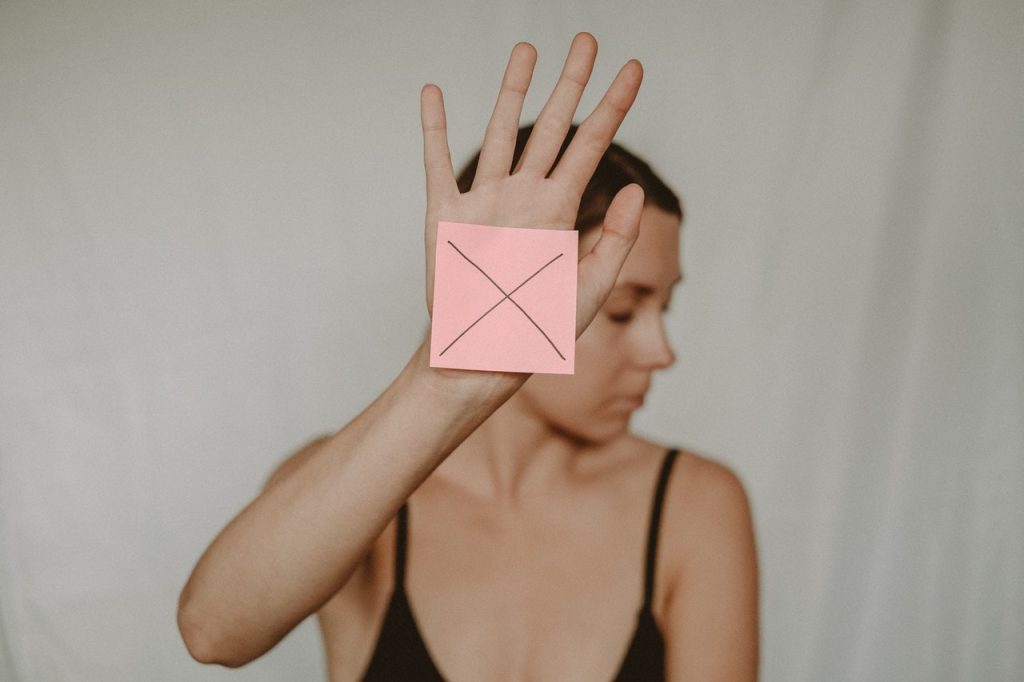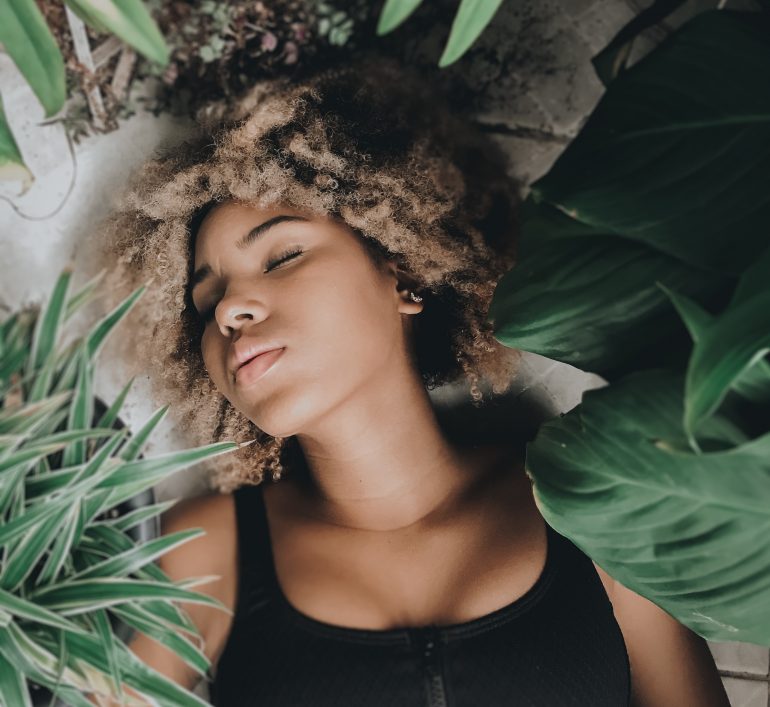
How are things looking between the sheets since our first “demystifying” blog post? We hope everything’s gliding along nicely! Female lubrication and female genitalia in general are a fascinating topic, don’t you think? Which is why we decided to take a closer look at how we deal with vaginal lubrication and vaginal dryness in this second article. We’ll also be delving into the latest findings on that other form of female lubrication: female ejaculation. Happy reading!
Free yourself from “getting wet” and please stop worrying, ladies!
In the previous article, we learnt that labelling lubrication as “getting wet” can have its downsides. We explained what vaginal lubrication actually is, what the secretions are made of and what influences our lubrication. Now, it’s down to us to make sure we’re no longer bound by these labels and social norms. We have to keep freeing ourselves from these shackles! So let’s take a look at five ways we can help take the pressure out of lubrication:
- Take vaginal dryness seriously, but don’t panic
- Accept your body’s lubrication for what it is and listen to your gut instinct!
- Find out about the latest scientific findings
- Don’t compare yourself to others
- Never put yourself under pressure to have an orgasm
Vaginal dryness affects a lot more people than you think
Many people with a vulva experience discomfort or even pain during sex or masturbation as a result of vaginal dryness. We want to keep raising awareness of this and explain to people that they don’t have to suffer. Although it’s something that many women report during the menopause, dryness can affect vulvas of ANY age. As we read before, there are so many factors that influence fluctuations in our lubrication that they are not broken down by age or other parameters.
Did you know that around 17 percent of women aged 18 to 50 and 25 percent of women aged 50 to 59 suffer from vaginal dryness according to Women’s Health Concern?
We really need to do something here! Every person and every vulva is unique. Lubrication is also very unique, which is why we need individual support from personal lubricants. Leaving aside the fact that personal lubricants can relieve the symptoms of vaginal dryness, pjur WOMAN personal lubricants can be used for every sexual experience because they almost always improve sex and the sensations you experience – regardless of how “well” your natural lubrication works.

Your lubrication is as unique as YOU!

The terms “being wet” and “getting wet” don’t really make much sense. It should be clear by now that a vulva always has to be a bit “wet” to maintain healthy vaginal flora. And the fact that your body can produce lubrication without being sexually aroused or that sexual arousal doesn’t always result in lubrication should be even clearer.
Some vulvas will NEVER be as “wet” as others – that’s just down to the way we’re built. Getting aroused doesn’t automatically result in lubrication. And lubrication doesn’t automatically mean that you’re aroused. We should all learn to use the terms “being wet” and “getting wet” more sparingly – those of us who have a vulva and also those of us who don’t. In fact, we should stop labelling sexual arousal altogether and spend more time exploring what turns us on and what our fantasies are!
Instead of asking “are you wet yet?”, we really should be asking “do you like what I’m doing?”
Female ejaculation – another kind of lubrication?
So what do we do with all of these terms that have sprung up around us? As with almost every other area of female desire, very little research has been carried out into the topic of lubrication. The first large-scale study of the vulva, for example, only took place between 2015 and 2017.
Did you know that some scientists BELIEVE the Skene glands (the “female prostate”) have got something to do with squirting. But there’s still no hard evidence for this, even in 2021, because there is still very little money available to finance studies exploring female desire. (Unbelievable, isn’t it?)

So is squirting even a thing? Does female ejaculation actually exist? Unfortunately, thanks to the porn industry, poor sex education and huge pressure from society, many different terms and phrases have emerged that aim to label and, subsequently, “set boundaries” on female sexuality.
With the “burden of proof” so low, is it even possible to ask the right questions? And should we be measuring our performance in bed based on our lubrication levels or phenomena such as squirting? For us, that’s a clear NO!
But let’s get back to the Skene glands. A number of studies currently think that female ejaculation stems from the Skene glands. Comprising up to 40 glands, the Skene glands surround the urethra and are located in the spongey tissue at the entrance to the vagina.
As their other name, the female prostate, suggests, the glands are very similar to the male prostate, which is where the ejaculate (sperm) is made. When the vulva starts to get aroused, the Skene glands swell to the point where we should even be able to feel them. The glands are admittedly more famous under their other name: The G-spot. Let’s not forget, the vestibular bulbs; located under the clitoral crura and surrounding the entrance to the vagina, they also swell during arousal. 😊
Time to stop labelling and start loving!
No matter how much we’re starting to demystify female desire, there are still many unanswered questions about female ejaculation.
For instance, how many women can actually ejaculate? Does it have something to do with the pelvic floor muscles? What triggers ejaculation? Can it be influenced by anything? Does it enhance your sexual experience?
So many questions that may – and hopefully will – be answered soon. One thing we can be sure of though: So little research has been done on the subject of female lubrication that there is no need to feel ashamed if you can – or can’t – ejaculate. And it may not even make sense to try and get your body to do it.
Be in tune with your body and don’t stress
Of course, this also feeds into the subject of orgasms. We don’t just put ourselves under pressure when it comes to lubrication – we also often get stressed about orgasms. Especially vaginal orgasms, right?
Did you know that putting yourself under pressure to reach an orgasm can also impact your body’s ability to lubricate. The more you try, the less aroused you become. So just let yourself go and enjoy the ride!

Slowly but surely, it’s time to stop stressing and start focusing more on our feelings and sexual needs. After all, vaginal lubrication, vaginal dryness, ejaculations – or lack thereof – and orgasms of all kinds are as unique as we are. We need to stop labelling and limiting our experiences. The only way to find the best possible sexual experience for ourselves is through self-exploration.
We’ve seen that we should take vaginal dryness seriously and always trust our gut instincts. We’ve also seen the information on female ejaculation and how we can stop putting ourselves under pressure. Now, it’s down to us to make sure that we’re no longer bound by labels and social norms but are free to simply enjoy our lubrication

